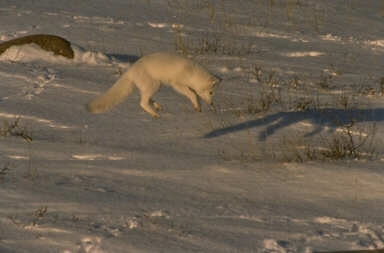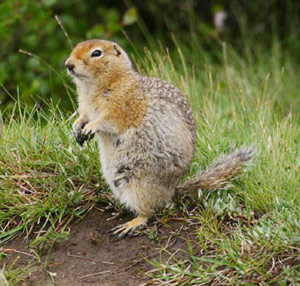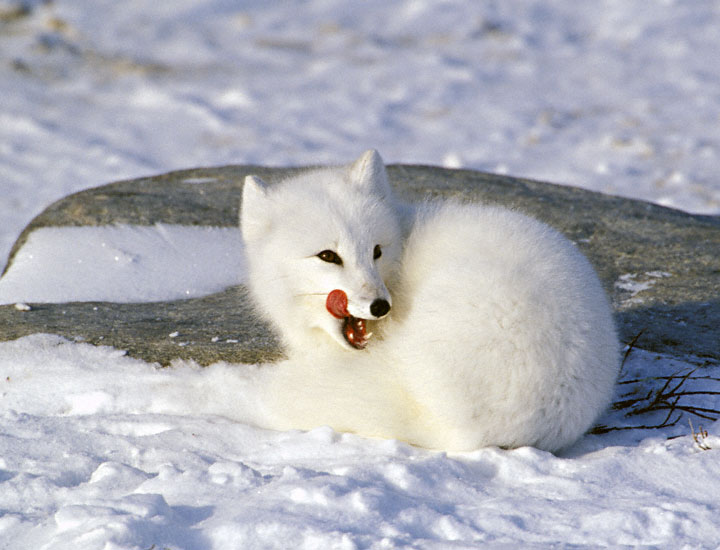Time for Lunch!

The Arctic fox, while classified in the order Carnivora, is more accurately an omnivore. Its diet consists primarily of rodents, but it will also eat ground-nesting birds and their eggs as well as berries, fish, invertebrates, worms, edible flotsam, crustaceans trapped in tide pools, marine mammals and carrion (McGonigal, 2001). It will take any available animal food, whether it is alive or dead. The primary prey of the Arctic fox during the summer months are the lemming, Arctic ground squirrels, and hares, although the fox is a key predator of ringed seal pups during the winter (Nowak, 1999). A family of foxes can consume dozens of lemmings in a single day. The Arctic fox caches food during periods of surplus in the event that prey later becomes scarce. During the winter, carrion such as dead beluga whales is the main food source. The Arctic fox will often trail polar bears on the sea ice and wolves on land to eat of the remains of seal kills (Sale, 2006). The fox's coat allows it to blend in with its surroundings, making it easier for it to sneak up and pounce on its prey. The fox typically does its foraging alone or in pairs. The Arctic fox has a complete digestive system that allows it to effectively digest meat. It also has a complete circulatory system that allows it to transport nutrients. Like most mammals, it stores its food as fat and simple sugars.

